Running out of battery can be problematic when there isn’t access to a wall outlet. Power banks allow your customers to keep their phones charged without an outlet, so they never miss out on a selfie or any critical calls.
Here’s everything to know about emerging power bank trends and the best ones to stock up on in your catalog!
Table of Contents
Market growth for the power bank market
Five power bank trends to supercharge sales in your business
Moving forward
Market growth for the power bank market
Today, the power bank industry is driven by several factors. This includes the shift to 5G networks, the popularity of digital content, and the increased production of mobile devices with larger processors that drain battery power faster. The burgeoning demand for smartphones and the price affordability and accessibility of new power banks are also significant contributors.
Researchers forecast that the industry will reach a USD 15.2 billion market value by 2027, growing from a value of USD 9.9 billion in 2021. Because of this, manufacturers are embracing innovative solutions that’ll attract and keep customers in the face of increased competition.
Judging by this growth, you can make killer profits catering to the North American and Asia Pacific regions as they have the largest market shares globally. However, that also means you could face stiff competition.
See the following five power bank trends to set you up for success regardless of the region you cater to.
Five power bank trends to supercharge sales in your business
Power banks are portable chargers designed for recharging electronic gadgets on the go.
They can range from pocket-sized, slim devices to larger and higher-capacity chargers. Owing to their convenience, one can charge several devices, such as tablets, portable speakers, laptops, mobile phones, and cameras.
On top of that, power banks can suit a range of user budgets and power requirements.
1. Mini power banks
Mini power banks are convenient for customers to carry in their pockets. Their lightweight batteries make them portable and suitable for frequent travelers. They also have a portable battery, making them lightweight and easy to carry around.
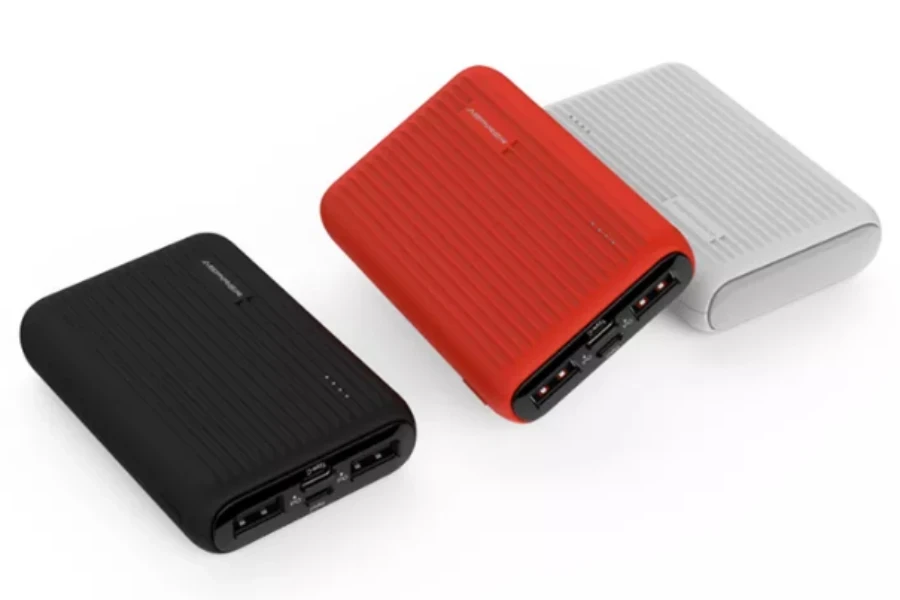
Make the most of the mini power bank trend by recommending them to frequent travelers.
2. Fast-charging power banks
Fast-charging power banks are helpful in today’s fast-paced world. Typically, smartphone batteries take some time to charge due to their larger capacities. But, fast-charging power banks allow users to spend less time charging and more time accomplishing other tasks.
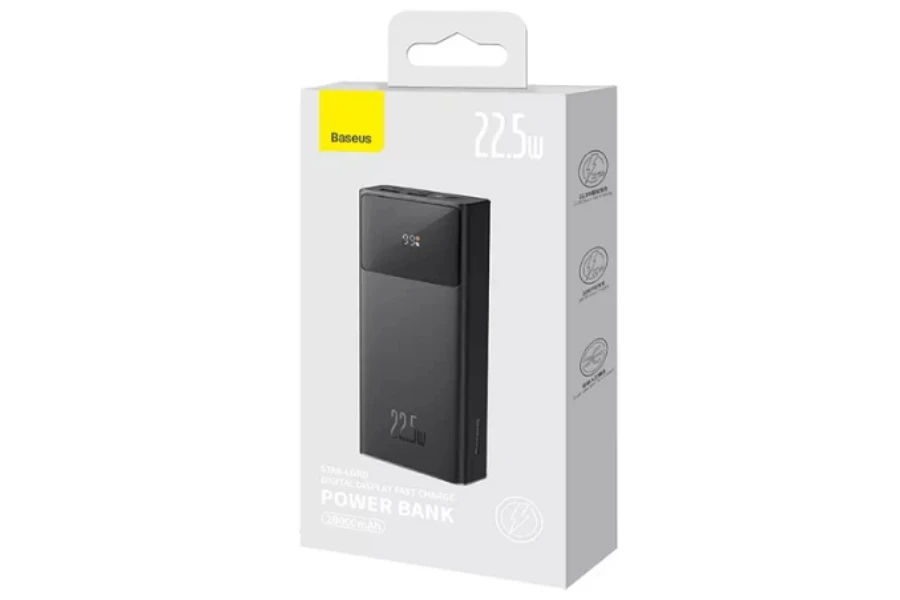
A few minutes of charging can give customers enough juice to finish an urgent task. So, focus on their fast charging capabilities as a selling point when marketing them.
3. Solar-powered power banks
Electricity-powered power banks are great. But what if there’s been an unusually extended power outage? Or perhaps your customers are going green? They need a solar power bank!
Standard power banks can store power and charge other devices on the go. Unlike an electric power bank, a solar power bank gets its energy from the sun.
Solar-powered power banks are a good choice for environmentally conscious customers. They can save money by using these power banks rather than power supplies to charge them.
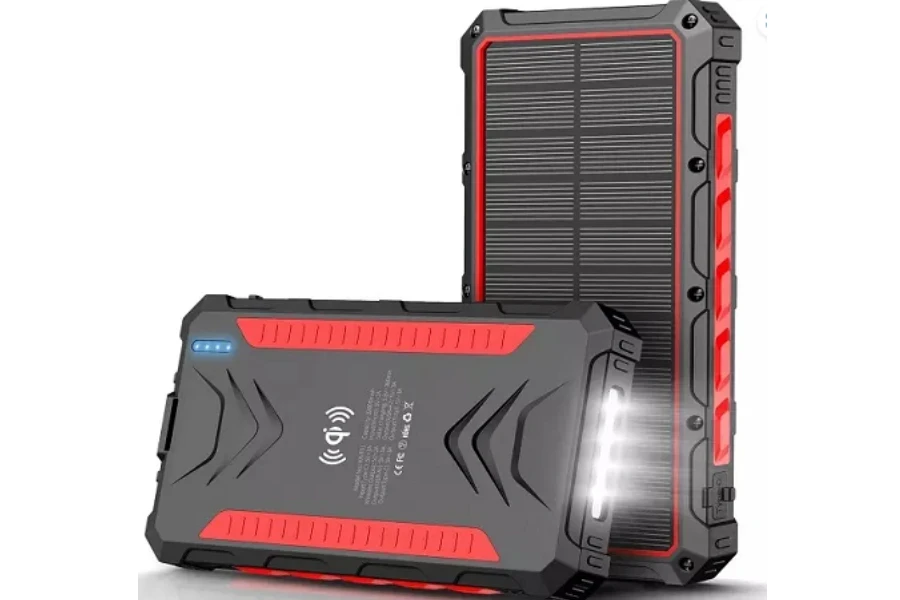
When customers camp or hike in the woods using solar-powered banks, they don’t have to worry about finding outlets to charge them. Offering these solar power banks to eco-conscious customers will help you maximize revenue.
4. Wireless charging
Wireless charging became the latest trend when phone makers started producing phones with wireless charging features. There’s high demand for devices with these features because they provide convenience to customers. And that’s why the global wireless charging market will reach $185.90 billion by 2030.
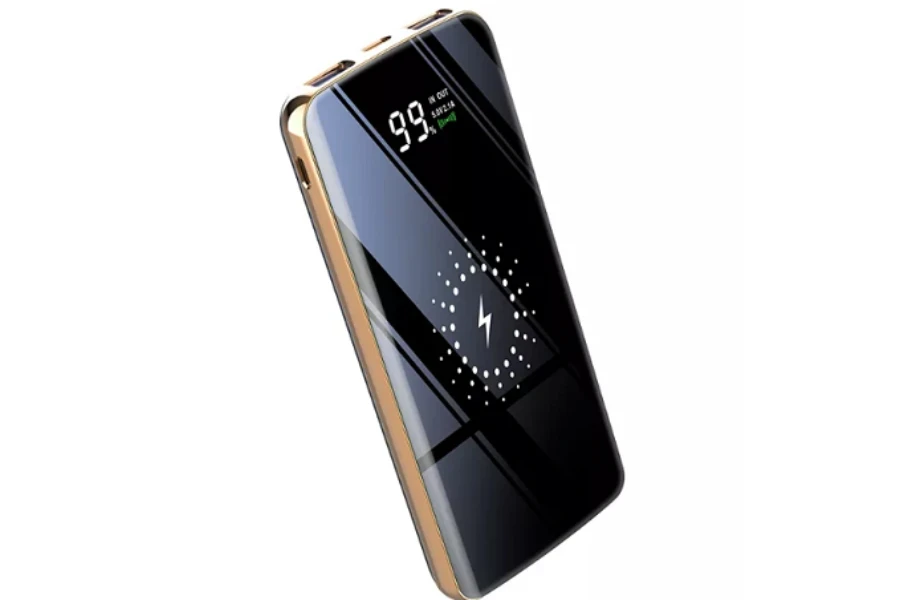
Most wireless power banks have no output port, so customers don’t need a cable. Charging coils embedded in the power banks produce energy to charge devices.
Wireless power banks are also better for customers who often misplace their chargers. No cables also means no wear and tear to customers’ charging ports. Endeavor to emphasize this characteristic to get them to patronize you.
5. Portable power stations
A portable power station has a bigger charging capacity than the standard power bank for mobile phones. They’re sturdy, superior, and store more power, making them ideal for group travels and long-term usage.
They have a battery capacity of 30,000 mAh or more. Typically, power bank batteries are either lithium-ion batteries or lithium polymer. Lithium-ion batteries store more power but are lighter than lithium-polymer batteries. Portable power stations, however, can use both types of batteries.
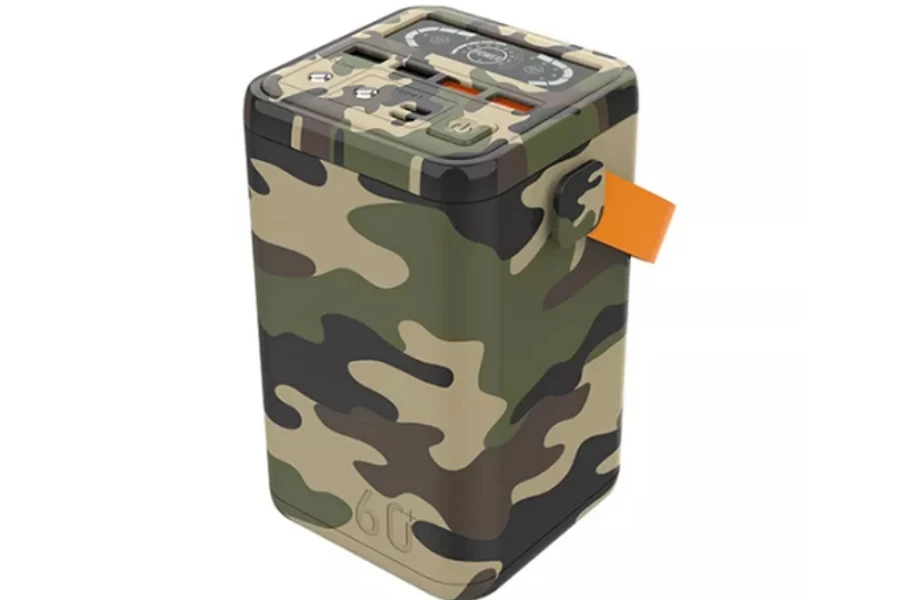
Some are as large as car batteries, making them effective for campers, camper vans, and mobile devices on the go.
Looking to piggyback off this trend? Target customers who live off-grid or experience frequent power outages.
Moving forward
Before offering power banks to customers, determine what type suits them best. If customers are always on the go, portability could be a priority. If they’ll only use the power banks once in a while, then it’s unlikely they’ll need high-capacity or portable power stations.
Recommend solar power banks to eco-conscious customers and mini power banks to those who travel light.
In all, you’ll gain a competitive edge by researching the needs and requirements of your ideal customer and catering to them.





 বাংলা
বাংলা Nederlands
Nederlands English
English Français
Français Deutsch
Deutsch हिन्दी
हिन्दी Bahasa Indonesia
Bahasa Indonesia Italiano
Italiano 日本語
日本語 한국어
한국어 Bahasa Melayu
Bahasa Melayu മലയാളം
മലയാളം پښتو
پښتو فارسی
فارسی Polski
Polski Português
Português Русский
Русский Español
Español Kiswahili
Kiswahili ไทย
ไทย Türkçe
Türkçe اردو
اردو Tiếng Việt
Tiếng Việt isiXhosa
isiXhosa Zulu
Zulu